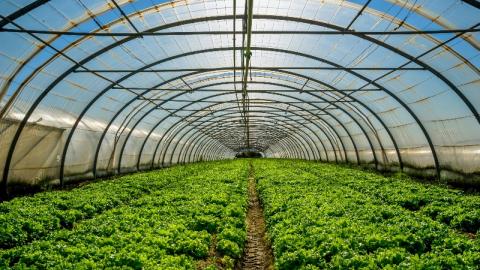You don’t necessarily have to strain your back to maintain your garden. To avoid having to use the watering can there are other solutions. Whether your irrigation equipment is buried or on the surface, revolving or a drip system, automatic irrigation has become a feature of many gardens and it can be used in many ways. How should you select yours?

You have pruned and trimmed, planted, sown the seeds and landscaped your garden (or you have called on a professional), furnished your terrace and put your swimming pool back into service. All you have to do now is enjoy those sunny days… Not quite! The major problem with a garden, apart from having to mow it, is the need to water it.
Fortunately, automatic irrigation systems greatly facilitate the everyday tasks of an amateur gardener. Gone are the days of having to water each flower bed, using a watering can, or having to ask your neighbours to water your plants while you are on holiday… Environmentally-friendly and economical, they can reduce your water bill by 50%. Automatic sprinklers offer systems that can be adapted to every type of garden: vegetable gardens, flower beds, new lawns, etc.
Subsurface systems, drip irrigation or revolving sprinklers, they all adapt well to specific requirements - including the very latest smart models. Which of the systems meets your needs?
The subsurface irrigation system
How does it work?
The subsurface irrigation system is mainly recommended for gardens with a large surface area. A network of underground pipes supplies the outlets distributed over the whole area to be irrigated and it is linked to a controller, enabling the user to adjust the time, frequency and duration of the irrigation. This in-built sprinkler is completely invisible, allowing for the homeowner to have a perfectly aesthetic garden. It is also recognised for its professional efficiency. However, be careful because there are a number of disadvantages in choosing this type of system.
How to install?
It is, without doubt, the most complicated to install. “Very few residential gardeners are able to install this type of system alone. You are better off calling in a professional to ensure that nothing is damaged”, we were told by Quentin Taudon, an adviser at Truffaut. This kind of installation requires a considerable number of studies to be carried out beforehand: measuring the water pressure at its intake, selecting the correct type of outlet, choosing an efficient layout… Furthermore, the subsurface system, as its name implies, needs to be buried below ground. Trenches have to be dug for laying the pipes. There are so many tricky stages that must be well-managed in order to avoid any unpleasant surprises when you get started, such as leakages, for example.
Surface irrigation systems
How does it work?
Within the family of sprinkling systems there are also surface sprinklers, known as “oscillating”. This kind of system is particularly suitable for small surface areas. Rotary or localised, automatic surface sprinkling operates at low or high pressure and can be programmed in the same way as the subsurface version. It is not exactly discreet and the main disadvantage of this type of irrigation is that it is not very attractive. Often being made of plastic and comprising many connections, it can also develop leaks.
How to install?
Less costly than subsurface sprinklers, they are also easier to install. In this case, the network of pipes is simply placed on the ground and can be removed when required.
To economize, plan for the purchase of a controller to manage the installations during your absences. Attached directly to the tap and battery-operated, it enables the user to select the periods (days of the week) and irrigation times chosen according to normal schedules.
The rotary jet irrigation system
How does it work?
Recommended above all for lawns and certain flower beds, rotary sprinklers can cover small surface areas of up to 150 m. Being inexpensive, this is one of the systems that is most popular with home users.
How to install?
The rotary sprinkler is equipped with two or three horizontal arms which rotate under the pressure of the water. Some models are laid on the ground, while others are raised on stakes or tripods. They are very easy to install, with simple connections at the water intake and a controller being all that is required for this type of moveable sprinkler to work properly. Beware! If it is poorly adjusted, it can rapidly overwater your lawn.
Drip irrigation or localised sprinkling
How does it work?
For ultra-precise irrigation, the drip irrigation system or the micro-perforated irrigation pipe is the most efficient. It is particularly recommended for vegetable gardens, hedges or flower beds. The water drips slowly towards the plants’ roots from pipes perforated with small holes. It only irrigates the plant required. It is certainly the most economical system of them all. The major advantage of this type of irrigation system is that it allows the user to avoid overwatering (which could prove to be fatal for some plants). It is also appreciated for its capacity to prevent weed growth.
How to install?
The very straightforward installation process is easy to carry out, although there are a number of subtleties that have to be mastered. It is important to understand that the plain drippers are installed directly into the main pipe or at the end of a micro-tube, whereas the plugs should be closed at the ends and they are useful for draining the system in winter. “This system is much appreciated by householders with balconies, terraces or urban gardens because they can have beautiful flowers without having to pay too much attention to them”, explained Quentin Taudon. All the same, the downside will be that this type of equipment is not very discreet.


